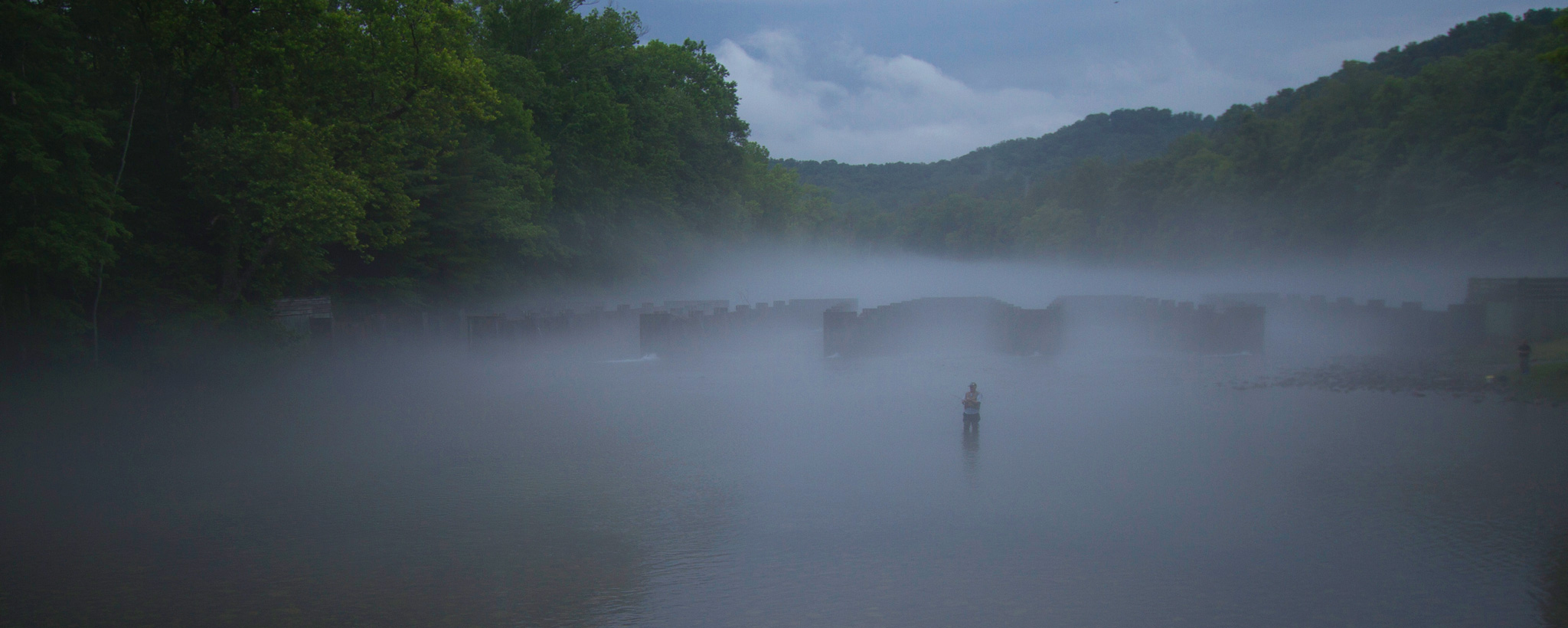Articles

Trout Fishing the TVA Tailwaters
Like to fish, but bass aren’t your bag? Try the more meditative art of trout fishing. Here’s a Q & A guide to where and how to safely fish for trout in the Tennessee Valley.
Where are the best places to go trout fishing in TVA tailwaters?
Trout need cold water to thrive, so the optimal conditions are found below TVA dams on tributary reservoirs where low water intakes pull cold water from the bottom of the reservoir. The tailwaters below Norris, South Holston, Wilbur, Apalachia and Blue Ridge dams all offer excellent opportunities for trout fishing. Other locations with good trout fisheries include Tims Ford, Chatuge, Fort Patrick Henry, Normandy, Nottely and Cherokee.
What do I need to do in preparation for my fishing trip?
First of all, you’ll need a fishing license and a trout stamp from the wildlife resource agency of the state in which you plan to fish. It’s also a good idea to check the fishing regulations, as special wild trout regulations—with reduced creel and size limits—are in place for many tailwaters. Water released through the tributary dams can be very cold even during the summer, so you’ll need a good pair of warm waders if you plan to wade-fish. In some locations, access to the river can be difficult. Use designated public access areas, or obtain landowner permission in advance. You can also hire a guide, as many are available around popular fishing spots.
How can I find out when TVA will be releasing water so that I can plan the timing of my trip?
Water release schedules for TVA dams are available from TVA’s Lake Levels page. Use the drop-down menu to choose the lake you’re interested in, and you’ll be given charts that show you hourly information about generation releases and water elevations. It’s important to note that water release schedules may change without notice. TVA makes every effort to provide timely and reliable release schedules. But unanticipated weather conditions and power system requirements may result in last-minute changes in the generating schedule.
What kinds of hazards should I be aware of?
A large amount of water can be discharged through a dam without warning at any time. For example, when the demand for electricity is high, the turbines that generate electricity at a dam may start automatically, resulting in a significant increase in the flow of water within only a matter of seconds—especially below tributary dams—such as Wautaga, Wilbur, Fontana and Douglas—which are usually located in steep terrain. Your safety depends upon obeying all posted safety regulations and warnings. Stay out of restricted areas. Move to a safer area immediately if a siren sounds or strobe lights flash at dams equipped with these warning devices. (Learn more about the warning systems in place at TVA dams.)
What role does TVA play in managing the tailwaters for trout fishing?
TVA does not regulate or manage trout fisheries. The state wildlife resource agencies are responsible for managing trout fisheries, with the exception of trout streams located within the Great Smoky Mountains National Park (which are managed by the National Park Service). Information concerning trout management plans and trout fishing regulations may be obtained directly from these agencies. Upon request, TVA assists the state agencies in various management activities, such as efforts to collect trout for population assessments, obtaining aquatic insect data to evaluate the trout food base in support of stocking, etc.
TVA implemented a reservoir releases improvement program in the 1990s to bolster aquatic habitat by increasing dissolved oxygen levels and maintaining minimum flows to prevent riverbed dry-out. These changes have improved both the survival and growth of tailwater trout. Aquatic biologists have been encouraged by the trend toward natural reproduction in some tailwaters, as evidenced by the presence of recently hatched trout.
Where can I get information about trout stocking?
Because of the popularity of trout fishing, most states stock selected streams with rainbow and brown trout to maintain acceptable catch rates. Stocking schedules are generally available from state web sites (e.g., Tennessee.gov) or by calling your state wildlife resource agency.
Share this story: ' fill='%23414141'%3E%3Cpath d='M0 0h314v314H0z'/%3E%3C/g%3E%3Cg transform='translate(6 4)'%3E%3Cmask id='d' fill='%23fff'%3E%3Cuse xlink:href='%23c'/%3E%3C/mask%3E%3Cuse fill='%23FFF' xlink:href='%23c'/%3E%3Cg mask='url(%23d)' fill='%23FFF'%3E%3Cpath d='M-149-165h300v318h-300z'/%3E%3C/g%3E%3C/g%3E%3C/g%3E%3C/svg%3E%0A)
' fill='%23414141'%3E%3Cpath d='M0 0h314v314H0z'/%3E%3C/g%3E%3Cg transform='translate(4 5)'%3E%3Cmask id='d' fill='%23fff'%3E%3Cuse xlink:href='%23c'/%3E%3C/mask%3E%3Cuse fill='%23FFF' xlink:href='%23c'/%3E%3Cg mask='url(%23d)' fill='%23FFF'%3E%3Cpath d='M-167-171h323v327h-323z'/%3E%3C/g%3E%3C/g%3E%3C/g%3E%3C/svg%3E%0A)
' fill='%23414141'%3E%3Cpath d='M0 0h314v314H0z'/%3E%3C/g%3E%3Cg transform='translate(4.26 4)'%3E%3Cmask id='d' fill='%23fff'%3E%3Cuse xlink:href='%23c'/%3E%3C/mask%3E%3Cuse fill='%23FFF' xlink:href='%23c'/%3E%3Cg mask='url(%23d)' fill='%23FFF'%3E%3Cpath d='M-150-157h300v300h-300z'/%3E%3C/g%3E%3C/g%3E%3C/g%3E%3C/svg%3E)
The Tug is the Drug
Trout fishing is good in the Tennessee Valley—particularly at South Holston Reservoir, which can match any fishery in the nation for monster trout. Learn more about it, as well as other Valley hot spots, along with our best advice for making a big catch. Click here for trout secrets you won't soon forget.